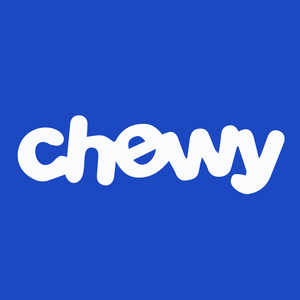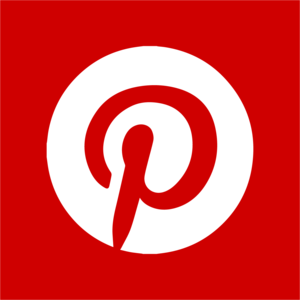
Pinterest (PINS)
We see solid potential in Pinterest. It not only produces heaps of cash but also has improved its profitability, showing its quality is rising.― StockStory Analyst Team
1. News
2. Summary
Why We Like Pinterest
Created with the idea of virtually replacing paper catalogues, Pinterest (NYSE: PINS) is an online image and social discovery platform.
- Disciplined cost controls and effective management have materialized in a strong EBITDA margin, and its profits increased over the last few years as it scaled
- Impressive free cash flow profitability enables the company to fund new investments or reward investors with share buybacks/dividends, and its growing cash flow gives it even more resources to deploy
- Incremental sales over the last three years have been highly profitable as its earnings per share increased by 22.8% annually, topping its revenue gains


We have an affinity for Pinterest. The price looks reasonable when considering its quality, so this could be a prudent time to invest in some shares.
Why Is Now The Time To Buy Pinterest?
High Quality
Investable
Underperform
Why Is Now The Time To Buy Pinterest?
At $27.28 per share, Pinterest trades at 13.7x forward EV/EBITDA. This price is justified - even cheap depending on how much you believe in the bull case - for the business fundamentals.
Entry price matters far less than business fundamentals if you’re investing for a multi-year period. But if you can get a bargain price it’s certainly icing on the cake.
3. Pinterest (PINS) Research Report: Q3 CY2025 Update
Social commerce platform Pinterest (NYSE: PINS) met Wall Streets revenue expectations in Q3 CY2025, with sales up 16.8% year on year to $1.05 billion. On the other hand, next quarter’s revenue guidance of $1.33 billion was less impressive, coming in 1% below analysts’ estimates. Its non-GAAP profit of $0.38 per share was 8.8% below analysts’ consensus estimates.
Pinterest (PINS) Q3 CY2025 Highlights:
- Revenue: $1.05 billion vs analyst estimates of $1.05 billion (16.8% year-on-year growth, in line)
- Adjusted EPS: $0.38 vs analyst expectations of $0.42 (8.8% miss)
- Adjusted EBITDA: $306.1 million vs analyst estimates of $297.2 million (29.2% margin, 3% beat)
- Revenue Guidance for Q4 CY2025 is $1.33 billion at the midpoint, below analyst estimates of $1.34 billion
- Operating Margin: 5.6%, up from -0.7% in the same quarter last year
- Free Cash Flow Margin: 30.3%, up from 19.7% in the previous quarter
- Monthly Active Users: 600 million, up 63 million year on year
- Market Capitalization: $22.91 billion
Company Overview
Created with the idea of virtually replacing paper catalogues, Pinterest (NYSE: PINS) is an online image and social discovery platform.
Pinterest is an online content and visual discovery platform that allows its users to create personalized collections of curated design or inspiration ideas while also providing recommendations based on a user’s personal interests. One part search engine and one part media platform, Pinterest is a hybrid of ecommerce and social media platform. For its users, most of which are female, Pinterest is a platform that offers discovery of items such as recipes, fashion, and home goods, and does so in an aspirational social media like use case.
For advertisers, Pinterest’s scale of hundreds of million monthly users is a valuable platform to target advertising where users innately are actively moving from ideation to purchasing, which is exactly where advertisers most like to insert themselves, when a potential customer is showing buying intent. As a bonus, unlike other social media platforms, advertising on Pinterest is content, a unique situation for advertisers.
4. Social Networking
Businesses must meet their customers where they are, which over the past decade has come to mean on social networks. In 2020, users spent over 2.5 hours a day on social networks, a figure that has increased every year since measurement began. As a result, businesses continue to shift their advertising and marketing dollars online.
Pinterest (NASDAQ: PINS) competes with fellow social media advertising platforms like Google (NASDAQ: GOOGL), Meta Platforms (NASDAQ:FB), Snapchat (NYSE: SNAP), and Twitter (NYSE: TWTR).
5. Revenue Growth
A company’s long-term sales performance can indicate its overall quality. Any business can put up a good quarter or two, but many enduring ones grow for years. Over the last three years, Pinterest grew its sales at a decent 13.5% compounded annual growth rate. Its growth was slightly above the average consumer internet company and shows its offerings resonate with customers.
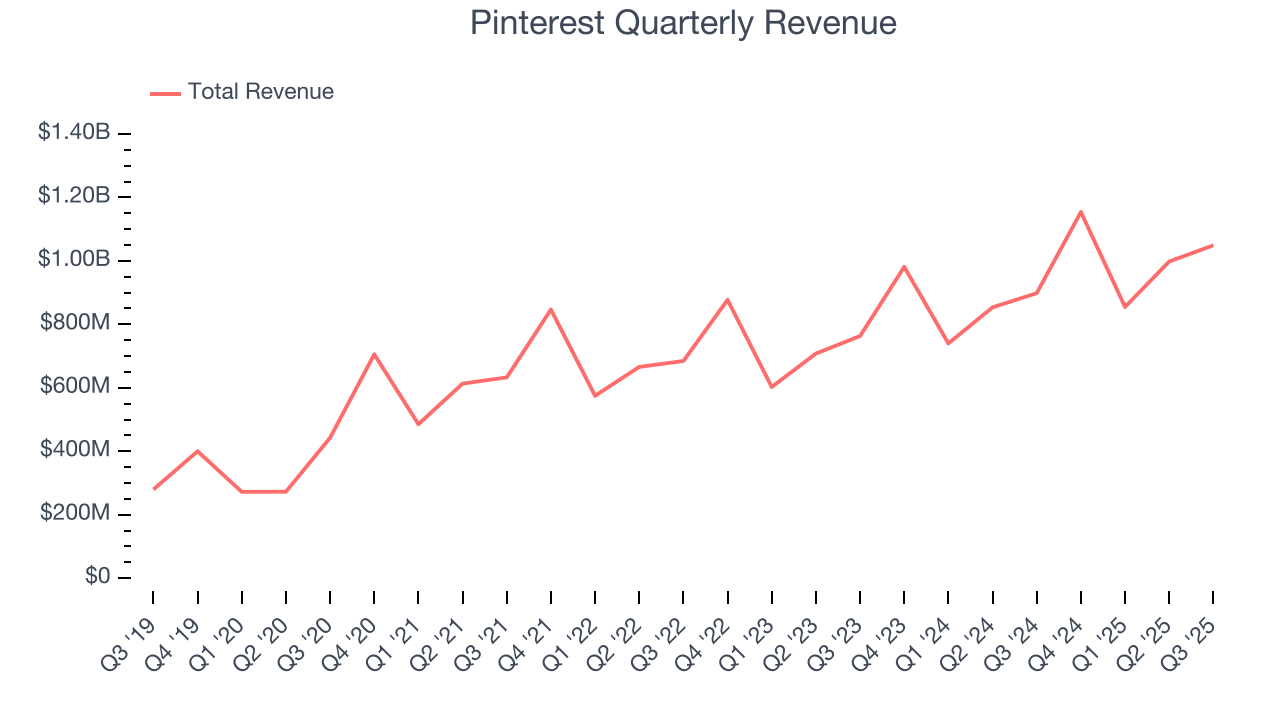
This quarter, Pinterest’s year-on-year revenue growth was 16.8%, and its $1.05 billion of revenue was in line with Wall Street’s estimates. Company management is currently guiding for a 14.8% year-on-year increase in sales next quarter.
Looking further ahead, sell-side analysts expect revenue to grow 15.1% over the next 12 months, an acceleration versus the last three years. This projection is commendable and implies its newer products and services will catalyze better top-line performance.
6. Monthly Active Users
User Growth
As a social network, Pinterest generates revenue growth by increasing its user base and charging advertisers more for the ads each user is shown.
Over the last two years, Pinterest’s monthly active users, a key performance metric for the company, increased by 11.2% annually to 600 million in the latest quarter. This growth rate is strong for a consumer internet business and indicates people love using its offerings. 
In Q3, Pinterest added 63 million monthly active users, leading to 11.7% year-on-year growth. The quarterly print isn’t too different from its two-year result, suggesting its new initiatives aren’t accelerating user growth just yet.
Revenue Per User
Average revenue per user (ARPU) is a critical metric to track because it measures how much the company earns from the ads shown to its users. ARPU can also be a proxy for how valuable advertisers find Pinterest’s audience and its ad-targeting capabilities.
Pinterest’s ARPU growth has been decent over the last two years, averaging 5.8%. Its ability to increase monetization while effectively growing its monthly active users demonstrates the value of its platform. 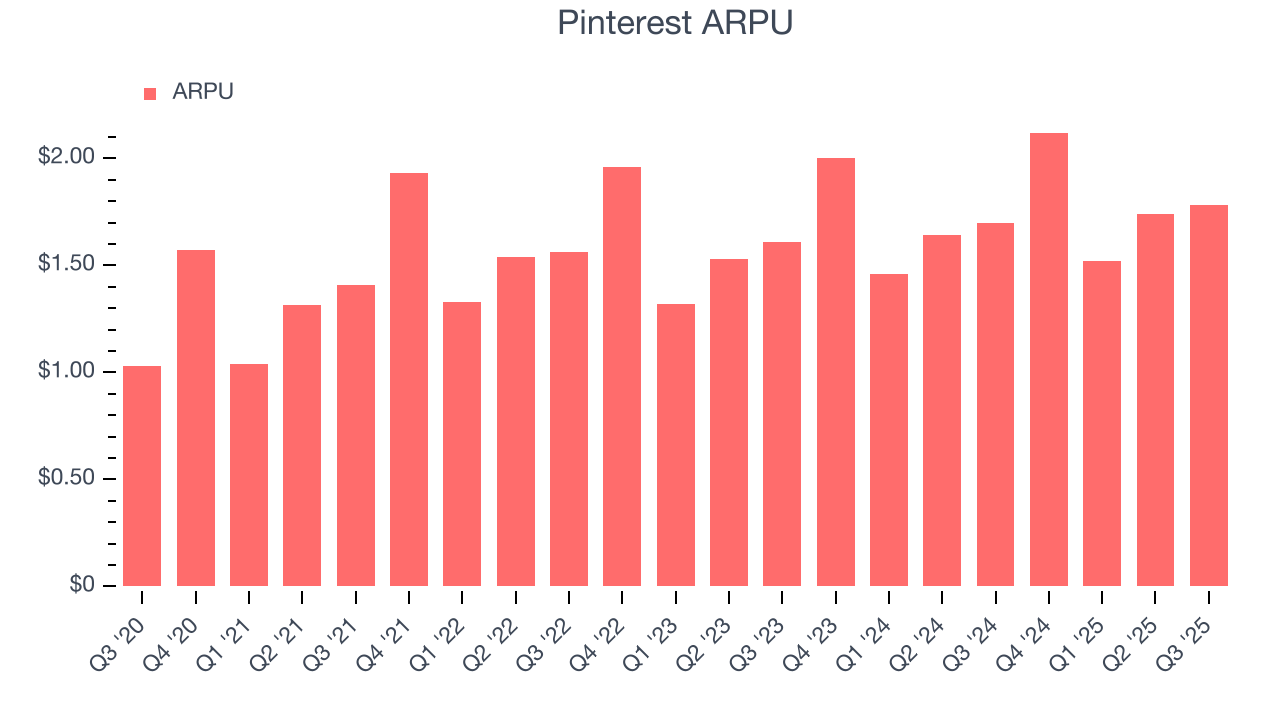
This quarter, Pinterest’s ARPU clocked in at $1.78. It grew by 4.7% year on year, slower than its user growth.
7. Gross Margin & Pricing Power
A company’s gross profit margin has a significant impact on its ability to exert pricing power, develop new products, and invest in marketing. These factors can determine the winner in a competitive market.
For social network businesses like Pinterest, gross profit tells us how much money the company gets to keep after covering the base cost of its products and services, which typically include customer service, data center, and other infrastructure expenses.
Pinterest’s gross margin is one of the best in the consumer internet sector, an output of its asset-lite business model and strong pricing power. It also enables the company to fund large investments in new products and marketing during periods of rapid growth to achieve higher profits in the future. As you can see below, it averaged an elite 79.5% gross margin over the last two years. Said differently, roughly $79.51 was left to spend on selling, marketing, and R&D for every $100 in revenue. 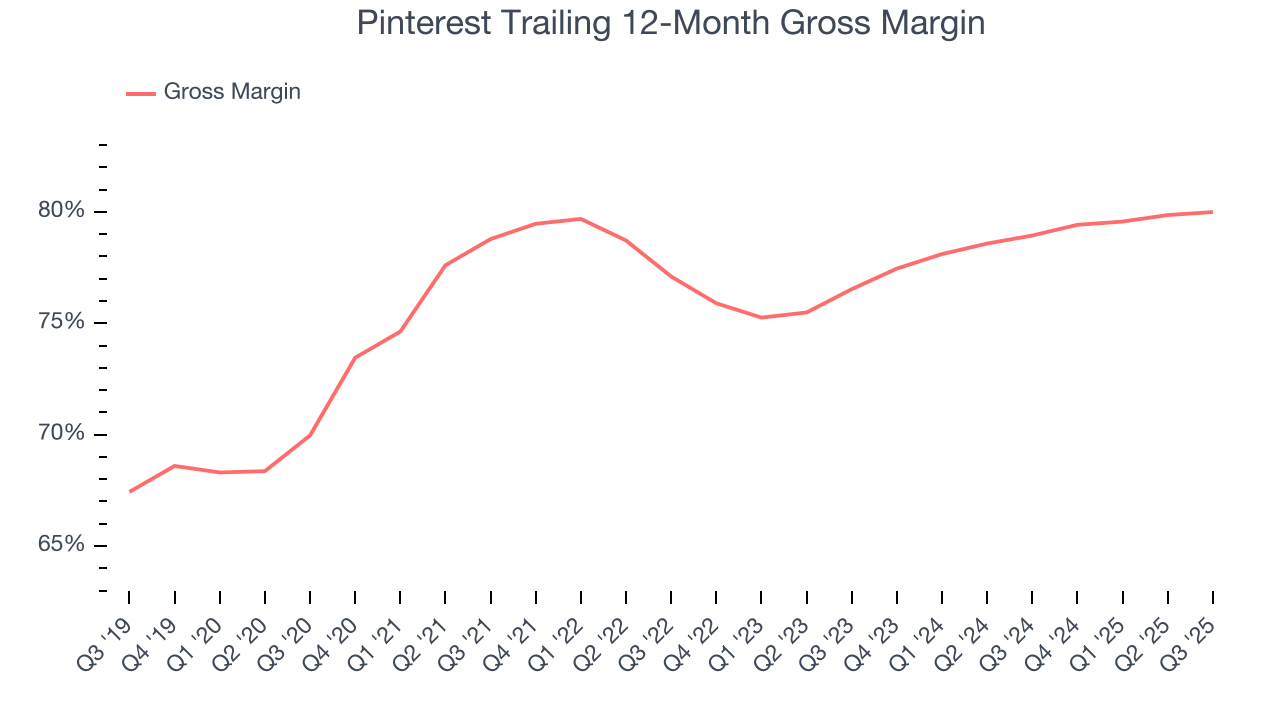
In Q3, Pinterest produced a 79.8% gross profit margin, in line with the same quarter last year. Zooming out, Pinterest’s full-year margin has been trending up over the past 12 months, increasing by 1.1 percentage points. If this move continues, it could suggest better unit economics due to more leverage from its growing sales on the fixed portion of its cost of goods sold (such as servers).
8. User Acquisition Efficiency
Unlike enterprise software that’s typically sold by dedicated sales teams, consumer internet businesses like Pinterest grow from a combination of product virality, paid advertisement, and incentives.
Pinterest is efficient at acquiring new users, spending 35.5% of its gross profit on sales and marketing expenses over the last year. This efficiency indicates relatively solid competitive positioning, giving Pinterest the freedom to invest its resources into new growth initiatives. 
9. EBITDA
Pinterest has been a well-oiled machine over the last two years. It demonstrated elite profitability for a consumer internet business, boasting an average EBITDA margin of 28.3%. This result isn’t surprising as its high gross margin gives it a favorable starting point.
Analyzing the trend in its profitability, Pinterest’s EBITDA margin rose by 7.6 percentage points over the last few years, as its sales growth gave it operating leverage.
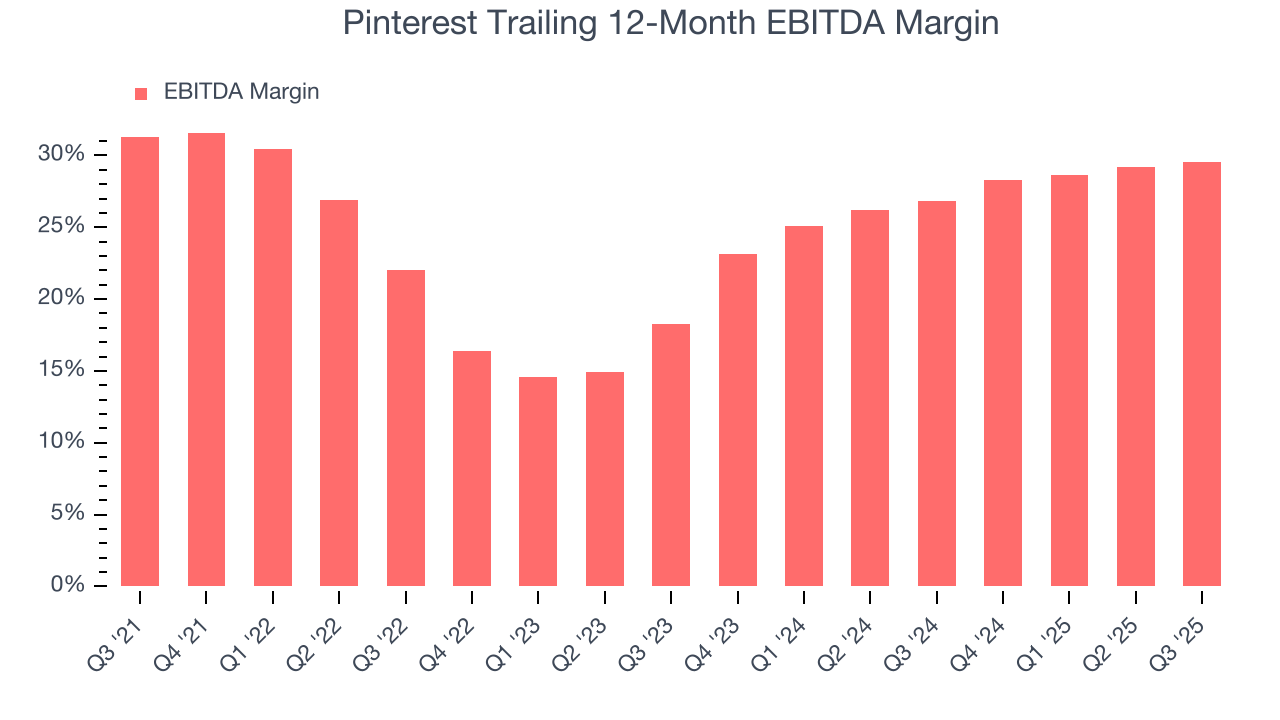
In Q3, Pinterest generated an EBITDA margin profit margin of 29.2%, up 1.7 percentage points year on year. The increase was encouraging, and because its EBITDA margin rose more than its gross margin, we can infer it was more efficient with expenses such as marketing, R&D, and administrative overhead.
10. Earnings Per Share
Revenue trends explain a company’s historical growth, but the change in earnings per share (EPS) points to the profitability of that growth – for example, a company could inflate its sales through excessive spending on advertising and promotions.
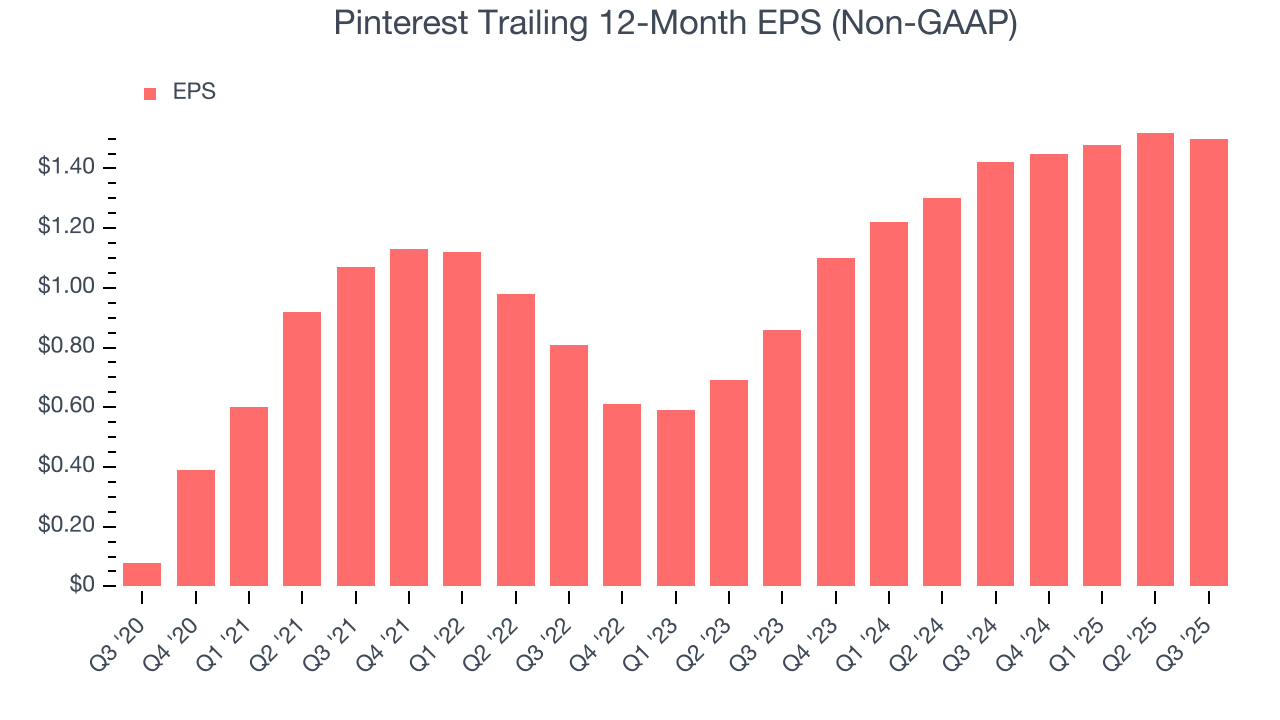
We can take a deeper look into Pinterest’s earnings quality to better understand the drivers of its performance. As we mentioned earlier, Pinterest’s EBITDA margin expanded by 7.6 percentage points over the last three years. This was the most relevant factor (aside from the revenue impact) behind its higher earnings; interest expenses and taxes can also affect EPS but don’t tell us as much about a company’s fundamentals.
In Q3, Pinterest reported adjusted EPS of $0.38, down from $0.40 in the same quarter last year. This print missed analysts’ estimates, but we care more about long-term adjusted EPS growth than short-term movements. Over the next 12 months, Wall Street expects Pinterest’s full-year EPS of $1.50 to grow 31.4%.
11. Cash Is King
Although EBITDA is undoubtedly valuable for assessing company performance, we believe cash is king because you can’t use accounting profits to pay the bills.
Pinterest has shown terrific cash profitability, driven by its lucrative business model and cost-effective customer acquisition strategy that enable it to stay ahead of the competition through investments in new products rather than sales and marketing. The company’s free cash flow margin was among the best in the consumer internet sector, averaging 27.4% over the last two years.
Taking a step back, we can see that Pinterest’s margin expanded by 6.3 percentage points over the last few years. This is encouraging because it gives the company more optionality.

Pinterest’s free cash flow clocked in at $318.4 million in Q3, equivalent to a 30.3% margin. This result was good as its margin was 3.2 percentage points higher than in the same quarter last year, building on its favorable historical trend.
12. Balance Sheet Assessment
Businesses that maintain a cash surplus face reduced bankruptcy risk.
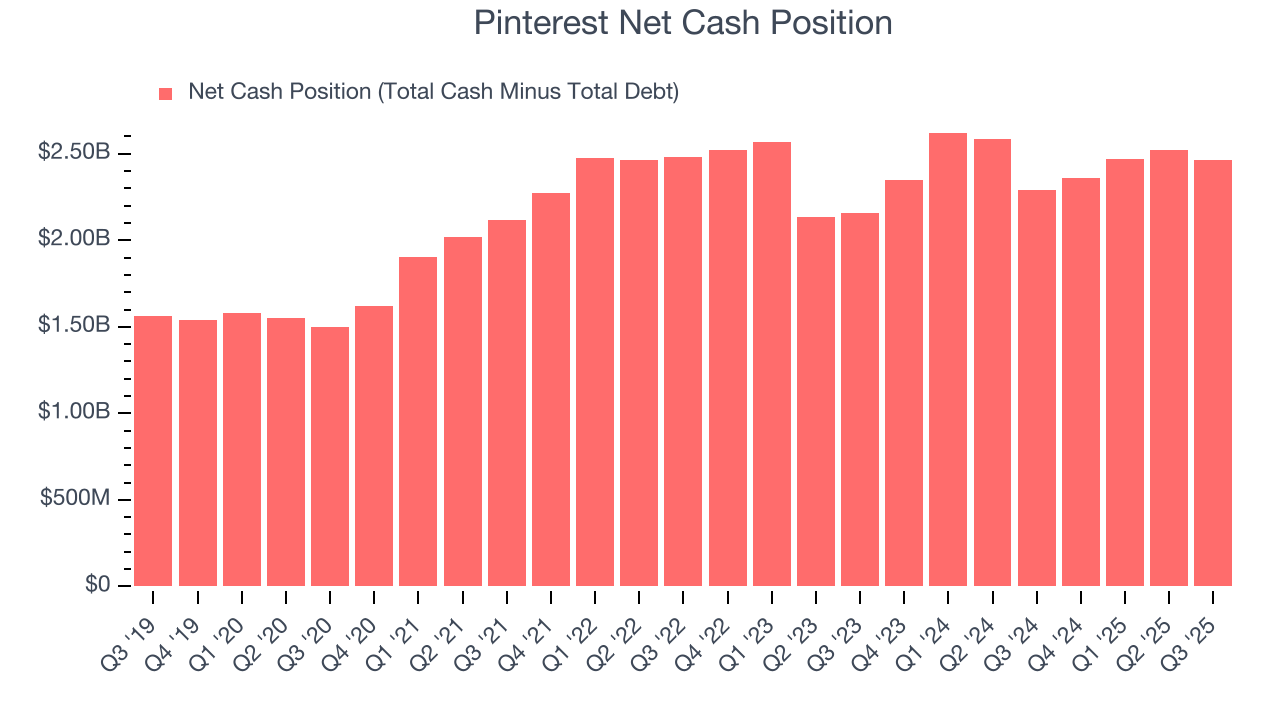
Pinterest is a profitable, well-capitalized company with $2.67 billion of cash and $205.2 million of debt on its balance sheet. This $2.47 billion net cash position is 10.8% of its market cap and gives it the freedom to borrow money, return capital to shareholders, or invest in growth initiatives. Leverage is not an issue here.
13. Key Takeaways from Pinterest’s Q3 Results
It was encouraging to see Pinterest beat analysts’ EBITDA expectations this quarter. We were also glad it expanded its number of users. On the other hand, its EPS missed and its revenue guidance for next quarter fell short. Overall, this quarter could have been better. The stock traded down 14.5% to $28.16 immediately after reporting.
14. Is Now The Time To Buy Pinterest?
Updated: December 4, 2025 at 9:18 PM EST
The latest quarterly earnings matters, sure, but we actually think longer-term fundamentals and valuation matter more. Investors should consider all these pieces before deciding whether or not to invest in Pinterest.
Pinterest is a high-quality business worth owning. To begin with, its revenue growth was good over the last three years, and its growth over the next 12 months is expected to accelerate. On top of that, its powerful free cash flow generation enables it to stay ahead of the competition through consistent reinvestment of profits, and its impressive EBITDA margins show it has a highly efficient business model.
Pinterest’s EV/EBITDA ratio based on the next 12 months is 13.7x. Looking across the spectrum of consumer internet companies today, Pinterest’s fundamentals shine bright. We like the stock at this price.
Wall Street analysts have a consensus one-year price target of $37.28 on the company (compared to the current share price of $27.28), implying they see 36.7% upside in buying Pinterest in the short term.

